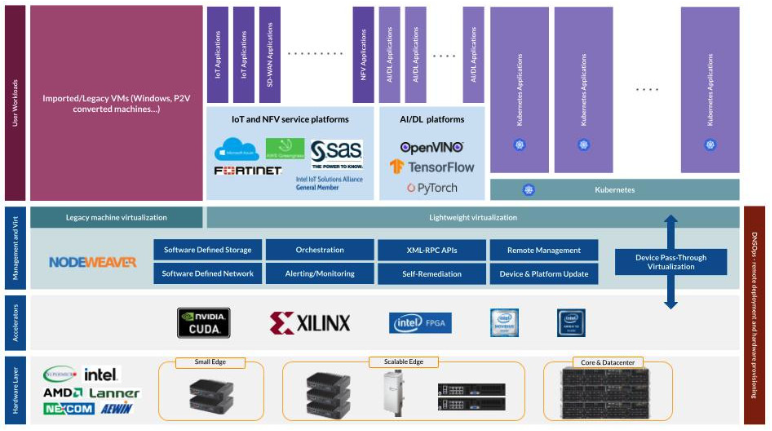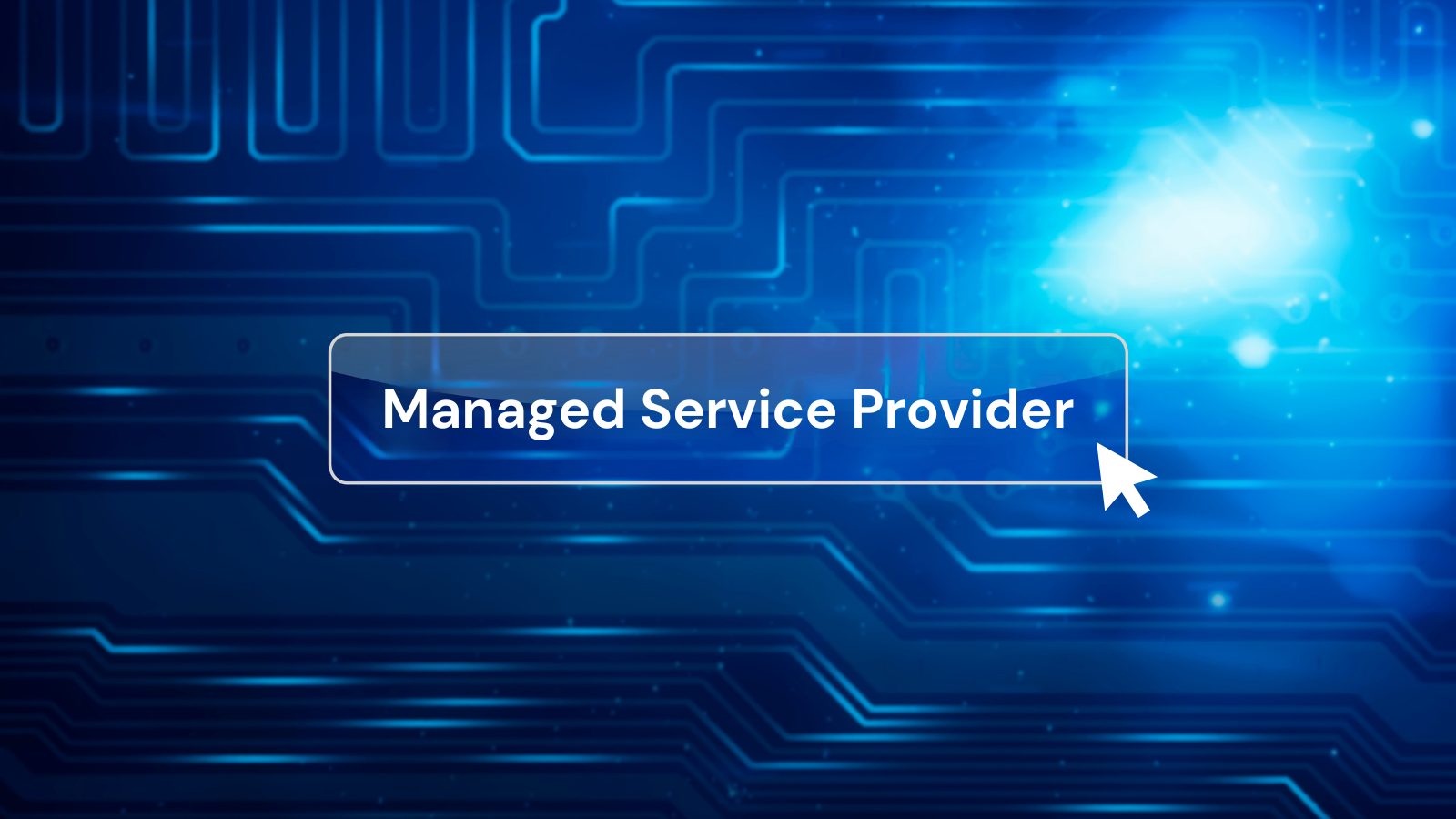 FEATURED
FEATUREDPETER WELCHER | Solutions Architect
Edge Field Day 2 consisted of presentations by NodeWeaver, a software-defined operating platform. This blog provides a brief overview of NodeWeaver’s capabilities and why they matter, followed by links for additional context.
Why Edge?
Edge Networks are a fascinating technical space. Use cases, scale, reliability, and data storage requirements can all vary widely.
If you think about it, the unique aspects of Edge include:
- Scale: per-corporate building, per-store, or per-field site (mining, oil, farming). The number of locations could be exceptionally large.
- Remoteness: there may not be staff, let alone technical staff, at edge sites. Some may be hard to get to (distance, off-road locations, security of access, etc.).
Data volume: lots of onsite sensors’ telemetry or audio/camera data (shopper tracking) may be collected. The sheer volume of data and WAN costs or scaling the data analysis may require local pre-processing and data storage, so summaries can be sent upstream while retaining the data should access to it be needed.
Footprint: The physical devices placed at the edge may need to have a small physical footprint. E.g., store closet half-rack or server and router in ceiling or wall-mounted. Providing services with fewer devices help with that, plus less cabling/power potential for coming unplugged, etc.
- Other factors.
Due to the above, reliable automation is incredibly important. You should minimize human-device interaction, both for Day 0 operations and for ongoing maintenance.
Building your own automation is always a possibility but may require time and a learning curve to become reliable and sustainable. The business may well need a solid Day 0 solution with vendor support, rather than an evolving home-grown automation solution.
The scale may require some staffing to support it. Simplifying support enables hiring staff with less technical skill levels, reducing cost.
Why NodeWeaver?
Elevator pitch: NodeWeaver provides a unified compute, storage, and (virtual) networking platform, running a Distributed File System that aggregates internal and direct-attached storage as a single storage entity available to all hosts – no external SAN (Storage Area Network) needed.
NodeWeaver says it provides:
- Automated deployments of Edge compute/storage clusters.
- “Full cloud capabilities”: VMs (Virtual Machines), Kubernetes, auto-scaling, High Availability, integrated SASE (Secure Access Service Edge), etc.
- Rolling refreshes and zero downtime.
- Edge Insight for comprehensive visibility across the “fleet,” from NodeWeaver clusters to the applications, including geo-positioning of the clusters.
- Persistent enterprise-grade storage.
- Efficiency (minimal footprint 1 GB RAM, <1 core) – allows use of smaller devices, economic use of hardware resources.
- Deterministic application performance based on soft-realtime scheduler for realtime compute on top of standard operating systems, even under full system load.
- Deploy and manage at “mass scale,” with API, Terraform, Ansible, Puppet support.
- Virtual networking.
- Geo-positioning of the clusters.
- “Zero-management”: easy to use interface, automates most tasks, simplifies operational activities.
- Flexibility: almost any mix of x86 hardware, figures out capabilities and components in a node, load-balances apps across cluster nodes, scales by adding cluster nodes.
The Big Picture
To summarize, NodeWeaver provides a “cloud-like” automation functionality that runs with a small footprint. It includes virtual networking. It supports a wide variety of uses. See the following diagram from their documentation:

Since I am network-focused (some might say “fixated”), I wanted to see what NodeWeaver does in that regard. I understood what I found as “underlay” and “overlay” – my wording.
Deployment does require an underlay, a small redundant switched network supporting the tiny server hardware NodeWeaver runs on, as well as the edge apps, and virtual networking. And, of course, some form of remote access to it. A diagram can be found under the NodeWeaver requirements link below. This underlay must be sufficiently reliable.
NodeWeaver does NOT automate the creation of that underlay.
Virtual Networking
Virtual network documentation link: https://12.docs.nodeweaver.eu/#/vnet_management. VM’s can be connected to different virtual networks in different ways.
VMware “VXLAN” is supported, tied to multicast groups.
Free Trial
Free 30-day trial, no form to fill out: https://12.docs.nodeweaver.eu/#/. This process requires a 5-minute installation.
Links
- https://nodeweaver.eu
- NodeWeaver 12 documentation: https://12.docs.nodeweaver.eu/#/
- NodeWeaver requirements: https://12.docs.nodeweaver.eu/#/requirements
- My recent Edge blog: https://netcraftsmen.com/edge-computing/
- Stephen Foskett’s blog about NodeWeaver at Edge Field Day (EFD) 2: https://www.linkedin.com/pulse/nodeweaver-pioneering-edge-computing-solutions-stephen-foskett
- Gestalt IT blog by Sulagna Saha: https://gestaltit.com/tech-field-day/sulagna/hands-off-management-at-the-edge-with-nodeweaver/
- Ned Bellavance’s EFD2 NodeWeaver blog: https://www.linkedin.com/pulse/nodeweaver-edge-field-day-2-ned-bellavance/
- Gina Rosenthal’s EFD2 NodeWeaver blog: https://www.linkedin.com/pulse/design-edge-infrastructure-nodeweaver-gina-rosenthal-hh0zc/
- EFD2 page with NodeWeaver video links: https://techfieldday.com/appearance/nodeweaver-presents-at-edge-field-day-2/
- EFD2: Automating Day 1 to Day N Operations with NodeWeaver featuring Carlo Daffara, Lorenzo Faleschini, Tom Mays
- EFD2: Automating Day -1 to Day 0 Operations with NodeWeaver featuring Lorenzo Faleschini, Tom Mays – Watch several tiny nodes get installed live at EFD2!
- EFD2: NodeWeaver Platform Overview featuring Carlo Daffara
- EFD2: Tackling Edge Computing Challenges with NodeWeaver featuring Carlo Daffara
- Tech Field Day Podcast: Episode of Utilizing Edge: https://utilizingtech.com/podcast/season-5/economics-of-edge-computing-with-carlo-daffara-of-nodeweaver/
Conclusion
If you or your app/server team need cloud-like (“nano-cloud”) functionality, up to and including Kubernetes but for the Edge and in large numbers, NodeWeaver should satisfy your requirements.






































